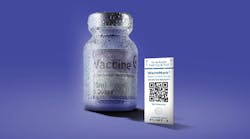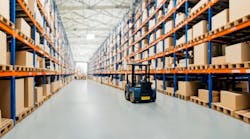With each passing week, more news emerges that planet Earth is in trouble. In February 2022 the United Nations Climate panel, the Intergovernmental Panel on Climate Change (IPCC), released a report stating that the negative impacts of climate change are mounting much faster than scientists had predicted not even ten years ago. The panel sounded a ‘code red for humanity’ in its last report. Now the IPCC is urging collective action to curb greenhouse gas emissions while simultaneously preparing for how to live with global warming since we are essentially already there.
As significant emitters of greenhouse gases, most large corporations are making and promoting greener changes to their products. Take the automotive industry, for example. At one time, car manufacturers bore significant pressure around emissions reduction and were generally looked at as polluters. Now consider pharmaceutical manufacturing: While many are surprised to learn that the pharma industry produces 55% more greenhouse gas than the automotive industry, the distribution logistics needed to have thousands of treatments readily available at far-reaching points of care is vast.
For pharma manufacturers looking to operate their networks with more eco-efficiency, there are gains to be achieved by looking for packaging optimization opportunities. More specifically, therapies requiring temperature control are a good place to start because newly approved interventions, including mRNA vaccine platforms and many personalized therapies (along with insulin, many fertility treatments and cancer medicines), require strict thermal control to preserve efficacy.
Material review
For decades, expanded polystyrene (EPS or Styrofoam) was preferred as thermal packaging material given that it combined light weight with insulating capabilities. EPS has since been revealed to be a carcinogenic environmental pollutant that is now shunned by consumers and banned by states at an increasing rate. In addition to being environmentally harmful, scientists estimate it can take hundreds of years for this plastic foam to break down in a landfill.
Cooling mechanisms such as gel packs and freezer bricks are typically employed to keep therapies within label requirements for storage and handling. But these often outweigh the actual product. This begs the question around precision — is all that weight required to keep the therapy in temperature range? It is not unusual for packaging components to also be oversized for the product being transported, whether that be one treatment or hundreds of doses. When this happens, cargo capacity becomes artificially limited, and so the cycle continues — heavier weight, greater cost, higher CO2 emissions.
Taking green action
Though the mantra of the three Rs ‘reduce, reuse, recycle,’ is well known, the fact that all three behaviors do not yield the same degree of environmental outcome is often overlooked. This hierarchy of value starts with where there is the most impact — less consumption — and ending on recycling where there is the least impact.
In the middle sits the notion of reuse. Consumers are increasingly comfortable with this circular behavior, from procuring a propane gas refill for the grill to shopping for pre-enjoyed clothing. Cold chain therapy distribution is a strong fit for reuse because, similar to why consumers exchange empty metal propane tanks, there is little desire on the part of pharma manufacturers to own thermally controlled shipping containers.
An often-overlooked benefit of reusable container engineering is that it is based on ‘fit-for-purpose.’ The design process typically takes into consideration the size of the payload (i.e., number of units per container), desired thermal profile, and shipping durations based on distribution locations. Along with custom design based on unique need, reusable shippers are built with durability in mind. Compare a container that can be used 75 times to the manufacturing of 75 single use shippers and their components. With reuse, far less energy is utilized on the front end along with fewer raw materials. And with each shipment utilizing a rented box, the cost per use is reduced.
Vessel for smart technology
Technology has been a tremendous enabler of circularity in pharmaceutical packaging and distribution logistics. Today’s IoT devices are smaller, lighter, and smarter — these are often seamless to the recipient as they are embedded within packaging. These devices emit signals that enable access to product status and condition information in real time. Data points around location, timing, temperature and custody can be collected when shipments are equipped. This provides confidence that a therapy is safe for a patient after arrival.
Another benefit of digital packaging is its ability to trigger what is akin to an early warning system. As soon as a cold chain therapy leaves a distribution center in a connected container, any critical status changes can be relayed during transit in the form of actionable alerts. Based on the reason for the alert/business rule triggered, an operator can intervene according to established procedures. This may include re-routing or replacing shipments depending on the criticality of the therapeutic product.
Aggregated, analyzed and reviewed over time, these data points can inform future decision making around shipping lane selection, smaller container sizing, and potentially longer shipping duration, reducing overnight delivery utilization. Data can also be calculated in terms of the ESG savings resulting from the adoption or deployment of smaller, lighter, reusable shipping containers. These savings are based on the real-world experience — miles, days, weight — of the shipper. Savvy suppliers are surfacing these insights for manufacturers to draw from for ESG and annual reporting.
Making the switch to reuse
For manufacturers and distributors evaluating the benefit of adopting reuse, there are important factors to consider. Most importantly is understanding the retrieval process and historical success rate of the potential supplier. What the percentage of shipping containers successfully returned and refurbished to original state, and how many uses (‘turns’) is each vessel estimated to yield?
Additionally it is important to note that the financial buyer of temperature controlled packaging solutions is different than the universe of end recipients. As such, packaging look and feel should relay a positive user interaction. Along these lines, retrieval programs must be tailored to the needs of the clinician and/or patient with easy-to-read instructions and diminished administrative overhead.
Circular economy, coming soon
With supply chain issues continuing to ebb and flow along with staggering inflation and early warning signs of a recession, consumers are thinking differently in this post COVID landscape. These days nearly every class of consumer goods has a reuse or rental angle to it. Additionally, expectations that manufacturers implement greener processes without dramatically increasing cost are only rising.
With circularity powered by data, there is ongoing opportunity for continuous process optimization to achieve the most impactful environmental, social and corporate governance outcomes. From reducing overall size and weight, to finding lower CO2 emitting routes, reuse provides a strong foundation on top of which to build and enhance a powerful sustainability program.






